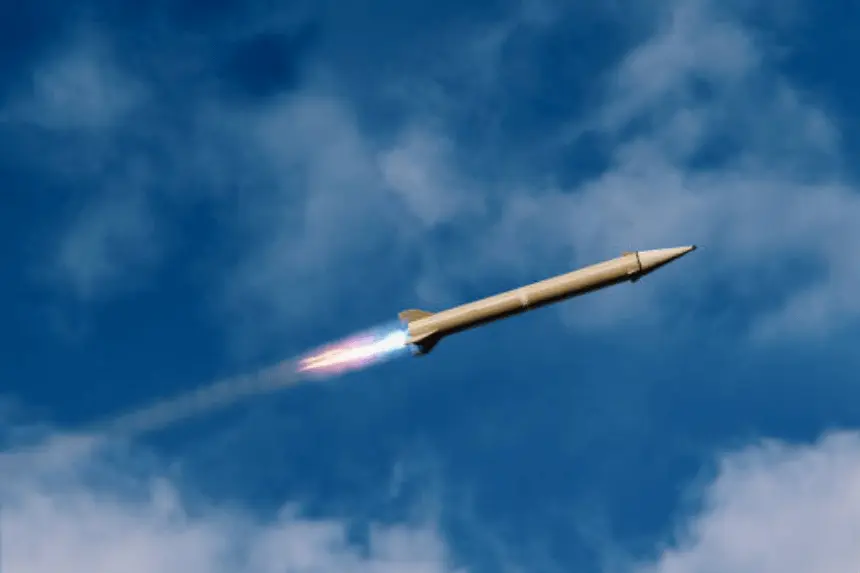Taking an aggressive and upsurging step, Iran strikes a US base in Qatar by launching several missiles towards the Al-Udeid Air Base, which is the largest American military base in the Middle East. Iran said the assault was a direct retaliation for American airstrikes that struck down three of its nuclear sites over the weekend. The world was observing, sirens were sounding in the city of Doha, missiles were spreading light over the night sky, and air defense units tried to block the oncoming danger.
- What Is the Reason Iran Hit The Al-Udeid Air Base?
- How many casualties were there?
- What was the Response of the United States to the Attack?
- Where does Qatar stand in such conflict?
- Is there any Pre-Attack Indicator?
- What is the History Behind This New Uptick?
- What May Come in the Future in the Region?
- Final Thoughts
The attack is part of a growing, sophisticated standoff between Iran, Israel, and the United States, which has led to one of the most violent tensions. With so much geopolitical tension to start with in the region, with the attack being the boiling point, it might be an indication of what is to come in the way of a confrontation or a last-ditch effort before the resumption of negotiations.
What Is the Reason Iran Hit The Al-Udeid Air Base?
The launching of Iran’s missiles over the Al-Udeid base, which is located only southwest of Doha, Qatar, is a calculated resort by Iran. The Islamic Revolutionary Guard Corps (IRGC), on the other hand, specified that the attack was a direct retaliation for the U.S. bombing its nuclear facilities. Tehran said it had chosen the targeted attack not as a random but a calculated move against what it referred to as infringement of sovereignty.
According to the IRGC, it turns out that bases of the US in the region represent not strength but weakness, as the new variant approach consists in the fact that now the symbolic objects of military activity can become prey. Iran attacks US base can well be one of the headlines, but it is also a strategic communication to Washington that further aggression on Iran will get a violent response.
Al-Udeid is a huge concentration of the American army in the Middle East. It accommodates thousands of American citizens and is the center of air operations in the region. It is not just a military threat that Iran has selected this specific target, but also a diplomatic one because Iran questions the influence of the U.S. in the Gulf.
How many casualties were there?
Although the missile launches were dramatic, with no reported deaths or injuries. Preliminary Iranian reports indicated that six missiles were launched, and U.S. officials said 14, with Qatar hinting that there were up to 19. According to reports, the American and allied defense systems intercepted all the missiles.
The lack of loss of lives is not the reason why the incident is any less serious. The government of Qatar termed the strike a blatant violation of sovereignty, and the foreign ministry of the country condemned the move, citing that the country had repeatedly advised against the threats of increasing tensions among regional powers.
But the fact that Iran directly gave the warning to Doha before the missile strike, which was confirmed by several Iranian officials, seems to have avoided loss of life. The strategic warning allowed the Qatari and American officials to leave a sufficient margin to execute protective measures and direct the civilians to take shelter where they were.
What was the Response of the United States to the Attack?
Surprisingly, the U.S President Donald Trump thanked Iran in advance. He said they gave them a warning, and hence no life was lost, and the attack was very weak with minimal damage. But he added that the incident would not be without a response, provided it persists.
According to the military analysts, the U.S. reaction was meant to de-escalate. But there is a high alert of the American air forces in all Gulf bases. Iran attack US base story may have died down in the short run, but there is no denying the fact that mistrust between both countries is on the rise.
On the diplomatic level, the attack makes things complicated. This strike came at the same time that Western leaders were gathering to hold urgent security consultations, and it dominated the drama of President Zelensky going outside the normal G7 proceedings to hold a sideline meeting with Trump, which instead completely fell apart as unrelated Middle East events unfolded. Here is the link to our article on Iran Hamas Tensions
Where does Qatar stand in such conflict?
Qatar is stuck in a geopolitical three-sided conundrum. As it hosts the U.S. military forces, it also has wary diplomatic relations with Iran. The attack was followed by anger expressed by Qatar’s foreign ministry, which branded the missile launches as an unwarranted attack on its territorial integrity.
However, it has been reported that Iran had given a warning to the Qatari officials about the launch. This puts Doha on a difficult diplomatic tightrope of maintaining national security, associations with the West, and the fine balance between its complex relationship with Tehran. The episode of Iran attacking a US base has caused a large strain on the neutral position that Qatar adopts.
To make things even worse, Qatar shut down its airspace just before the assault, and the airlines started rerouting flights to Hamad International Airport, which is considered one of the busiest airports regarding international traffic in the world. There was chaos in the region as more than 100 flights were diverted, causing thousands of passengers to be inconvenienced.
Is there any Pre-Attack Indicator?
The warning signals had started to show up hours before the launch of the missiles. The embassies of the U.S and the U.K. in Doha issued advisories urging their nationals to take shelter. Though these messages came in a precautionary form, they meant that there was a threat that was looming from intelligence agencies.
The closing of the airspace of Qatar, along with the regionally planned action of Bahrain and Kuwait to shut their airspace, was a sign of an even greater military consciousness. The images of the satellite later showed that the Iranian missiles were transferred into operation-ready postures, which proves that the strike was long anticipated.
An aviation tracking website that operates globally, Flightradar24, reported that more than 100 flights were diverted. Hundreds of passengers and crewsatn the airport of Doha airport were surprised as the people scrambled to seek shelter in the terminals, as the air raid sirens could be heard in the city. Iran’s attack US base was not merely a military signal, but a shock to the world.
What is the History Behind This New Uptick?
The origins of this intensification can be traced to June 13, when Israel started carrying out daily air strikes against the Iranian nuclear and military installations. The government in Israel has intensified the use of direct military interventions within the borders of Iran in the name of stopping Iran from acquiring nuclear weapons.
As a reaction, the U.S. took action by bombing three of Iran’s major nuclear sites a few days before the missile attack on Qatar. It was thought these facilities were hubs of Iranian enrichment of uranium. The U.S. said it had caused considerable damage through its strikes, but the degree of the damage has not been verified to the full extent.
The leadership in Iran has been adamant that the nuclear program in Iran is meant to be peaceful. But years down the line, with international sanctions, unsuccessful nuclear agreements, and attempted sabotage taking place, the country has become more assertive about claiming the right to defend its properties.
It is a critical context for appreciating the fact that Iran’s US base is not breaking headlines but history in the making, with decades of distrust between the two nations finally boiling to the surface.
What May Come in the Future in the Region?
This recent development can bring the two close to a confrontation or enforced diplomacy. Regional stability is bound to feature in the forthcoming summit in the Netherlands by the Western allies and particularly, the NATO members. In the meantime, Supreme Leader Ayatolla Ali Khamenei of Iran also repeated that Iran wanted no war but will never condone violations.
Unless the retaliatory attacks are put in check, more attacks might be witnessed against American or allied property in Europe. Alternatively, this point can be considered as a reset point, and all the sides come to the general conclusion that the military escalation is more dangerous than beneficial.
The international community should move with haste in ensuring that all stakeholders return to the negotiating table. The Iran attacks US base story is likely to happen in other regions of the region in the future, unless something is done to curb it.
Final Thoughts
The Iran attacks US base incident marks a major twist in the already fragile Middle East crisis. This calculated strike was aimed at sending a powerful message that Iran will not remain passive in the face of external aggression. While no casualties were reported, the implications are deep and far-reaching. Trust is eroding rapidly, and the stakes are higher than ever for global diplomacy. The missile assault on Al-Udeid could either trigger a wider conflict or open the door to renewed negotiations. One thing remains certain: the Iran attacks US base scenario has placed regional stability in a precarious position. Until diplomacy gains momentum, the world must stay alert to every signal from the region.








